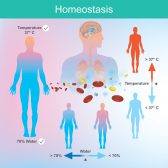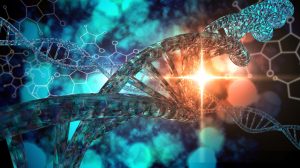Definition
noun
A nonantigenic, oxygen–stable β-hemolytic enzyme produced by some bacteria, especially streptococci
Supplement
Streptolysin is a type of hemolysin produced by or derived from some strains of streptococci. It is a hemolytic exotoxin.
A streptolysin may be streptolysin O or streptolysin S. In 1930s, E. W. Todd was able to identify these two toxins responsible for the ability of group A streptococcus to lyse the erythrocytes of mammals. 1 Streptolysin O is oxygen-labile whereas streptolysin S is oxygen-stable.2 This means that streptolysin S is stable in the presence of atmospheric oxygen. In blood agar, the streptolysin S forms a zone of β hemolysis around the colonies of streptococci grown under routine aerobic conditions. This compound is toxic to leucocytes, platelets and many cell lines.
Compared with streptolysin O that is antigenic, the streptolysin S is not because of its relatively small size.
Abbreviation/Acronym:
- SLS
Compare:
See also:
Reference(s):
1 Wessels, M. R. (2005). Streptolysin S. The Journal of Infectious Diseases, 192 (1): 13–15. https://doi.org/10.1086/430625
2Sierig, G., Cywes, C., Wessels, M. R., & Ashbaugh, C. D. (2003). “Cytotoxic effects of streptolysin o and streptolysin s enhance the virulence of poorly encapsulated group a streptococci”. Infect. Immun. 71 (1): 446–55







